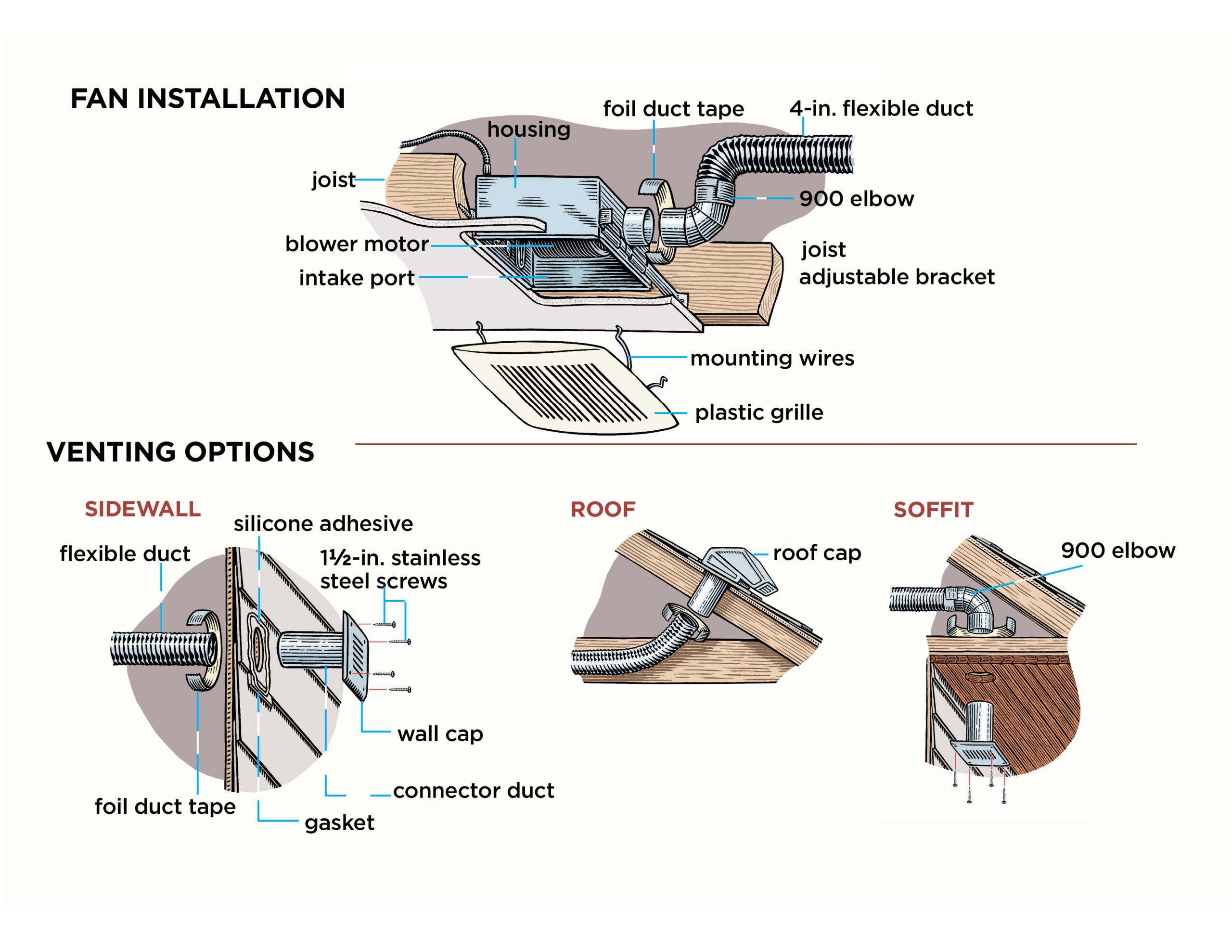Can PVC be Used for Bathroom Exhaust Fans?: Can You Use Pvc For Bathroom Exhaust Fan

Can you use pvc for bathroom exhaust fan –
PVC (polyvinyl chloride) is a lightweight, durable, and inexpensive material that is often used for plumbing and drainage applications. It is also becoming increasingly popular for use in bathroom exhaust fans.
If you’re wondering if PVC is a good choice for your bathroom exhaust fan, it’s worth considering a best timer switch for bathroom fan to help regulate the airflow. PVC is a durable and cost-effective material that can withstand the moisture and humidity of a bathroom environment.
It’s also easy to install and maintain, making it a great option for DIYers. So, if you’re looking for a way to improve the ventilation in your bathroom, consider using PVC for your exhaust fan and adding a timer switch for added convenience.
Advantages of Using PVC for Bathroom Exhaust Fans
- Lightweight and easy to install: PVC is much lighter than metal, making it easy to install and handle. This is especially important for bathroom exhaust fans, which are often mounted on ceilings or walls.
- Durable and long-lasting: PVC is a very durable material that is resistant to corrosion and rust. This makes it an ideal choice for bathroom exhaust fans, which are exposed to moisture and humidity.
- Inexpensive: PVC is a relatively inexpensive material, making it a cost-effective option for bathroom exhaust fans.
Disadvantages of Using PVC for Bathroom Exhaust Fans
- Not as strong as metal: PVC is not as strong as metal, so it is not suitable for use in high-traffic areas or where there is a risk of impact.
- Can be damaged by heat: PVC can be damaged by heat, so it is important to keep it away from heat sources such as light bulbs or heating vents.
- Can release harmful fumes when heated: PVC can release harmful fumes when heated, so it is important to ensure that it is not exposed to high temperatures.
Examples of How PVC is Used for Bathroom Exhaust Fans
- Exhaust fan housings: PVC is often used to make the housings for bathroom exhaust fans. This is because PVC is lightweight, durable, and inexpensive.
- Exhaust fan ducts: PVC is also used to make the ducts that connect bathroom exhaust fans to the outside of the house. This is because PVC is lightweight, durable, and easy to install.
- Exhaust fan grilles: PVC is sometimes used to make the grilles that cover the openings of bathroom exhaust fans. This is because PVC is lightweight, durable, and easy to clean.
Types of PVC Used for Bathroom Exhaust Fans

PVC (polyvinyl chloride) is a versatile material used in various applications, including bathroom exhaust fans. Different types of PVC offer unique properties that make them suitable for specific uses. Understanding these variations is crucial when selecting the right PVC for your bathroom exhaust fan.
There are two main types of PVC used for bathroom exhaust fans: rigid PVC and flexible PVC.
Rigid PVC, Can you use pvc for bathroom exhaust fan
Rigid PVC is a durable and sturdy material that is commonly used for exhaust fan housings and ductwork. It is resistant to corrosion and chemicals, making it suitable for humid environments like bathrooms. Rigid PVC is relatively inexpensive and readily available, making it a cost-effective option.
Flexible PVC
Flexible PVC is a pliable material that can be easily bent and shaped, making it ideal for connecting exhaust fans to ducts. It is also resistant to corrosion and chemicals, ensuring durability in bathroom settings. Flexible PVC is slightly more expensive than rigid PVC, but it offers greater versatility and ease of installation.
Installation Considerations for PVC Bathroom Exhaust Fans

Installing a PVC bathroom exhaust fan is a relatively simple process that can be completed in a few hours. However, it is important to follow the manufacturer’s instructions carefully to ensure a proper installation.
Tools and Materials
- PVC bathroom exhaust fan
- PVC pipe (3-inch or 4-inch diameter)
- PVC fittings (elbows, tees, etc.)
- PVC cement
- Screwdriver
- Utility knife
- Measuring tape
- Level
Installation Steps
- Choose a location for the fan that is at least 6 inches away from any light fixtures or other electrical devices.
- Cut a hole in the ceiling or wall for the fan using a utility knife or hole saw.
- Assemble the PVC pipe and fittings according to the manufacturer’s instructions.
- Apply PVC cement to the joints of the PVC pipe and fittings.
- Insert the PVC pipe into the hole in the ceiling or wall.
- Screw the fan into the PVC pipe.
- Turn on the fan and check for proper operation.
Installation Methods for Different Types of PVC Bathroom Exhaust Fans
| Type of Fan | Installation Method |
|---|---|
| Inline Fan | Installed in the ductwork of the exhaust system. |
| Ceiling Fan | Mounted on the ceiling of the bathroom. |
| Wall Fan | Mounted on the wall of the bathroom. |
So, can you use PVC for bathroom exhaust fans? Well, let me tell you, it’s not as simple as choosing the right one piece wallpaper iphone. PVC can be a bit tricky to work with, but if you’re up for the challenge, it can be a great option.
Just make sure you do your research and follow the instructions carefully.